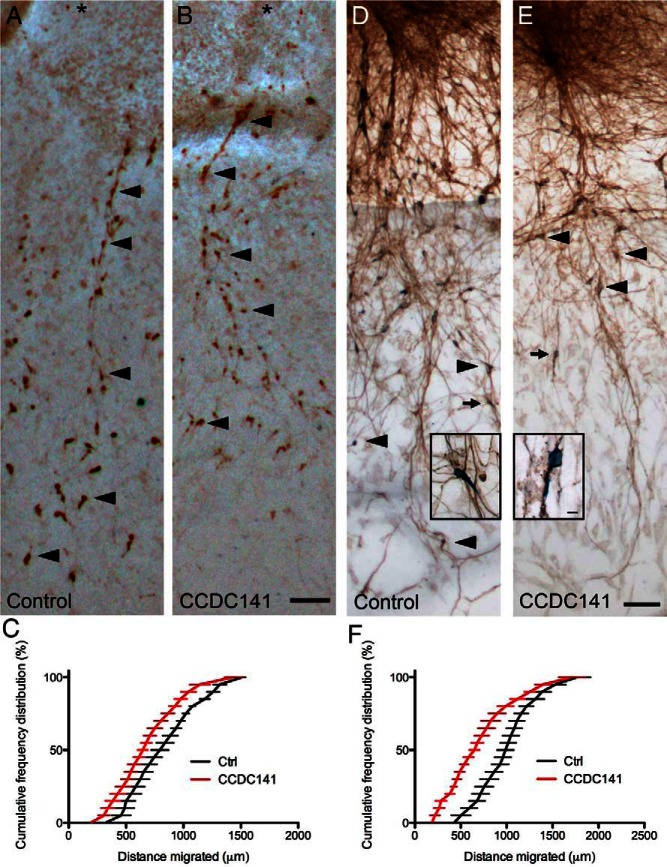Figure 6.
CCDC141 knockdown reduces GnRH neuronal migration but not olfactory outgrowth. A and B, Immunopositive GnRH neurons in control (A) or Ccdc141-siRNA-treated explants (B). Distance GnRH neurons (arrowheads, examples) migrated from center of nasal pit (asterisk) outward was measured 3 days after electroporation. Scale bars, 100 μm (A and B). C and F, Cumulative frequency of 2 independent siRNA experiments showing distributions of distances GnRH neurons migrated. In both experiments, a shift to the left after Ccdc141 knockdown was detected (P < .001, two-way ANOVA, n = 4 explants/condition). D and E, Olfactory axon growth was unaffected by electroporation with Ccdc141 siRNA. Images of explants electroporated with control (D) or Ccdc141 siRNA (E) and stained for peripherin (marker of olfactory axons, brown fibers) and GnRH (blue cell bodies). Farthest GnRH neurons visible in the field of view are marked with arrows/arrowheads. Scale bars, 100 μm (D and E). Higher magnification of GnRH neurons (blue) closely apposed to olfactory axons (brown) from explants in A and B, respectively (arrows), are shown in boxes. Scale bars, 10 μm (insets in D and E).

